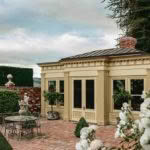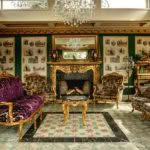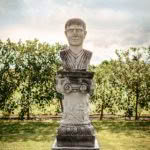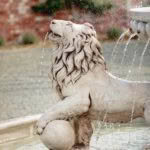Myths and legends in Marlborough: How the Hammonds grew a classical garden in the middle of wine country

Mythological creatures live harmoniously in a fun-but-formal Italianate garden created by a pillar of the community.
Words: Emma Rawson Photos: Kate Macpherson
Lynne Hammond didn’t bat an eyelid when Garden Marlborough asked her to host 400 people on her lawn during its annual festival. Her formal garden, Longfield, on the outskirts of Blenheim, echoes with merriment. The garden’s bricked walls bounce her vivacious laugh around, making ripples in the water features and bringing cheeky smiles to the sphinx statues.
“I love people and parties,” she says.
Later, she wore a fabulous baby-blue pants suit and white sneakers when greeting bus-loads of guests who visited during the festival’s garden tours (a further 300 guests). Her candy floss-coloured topknot was seen bouncing around the grounds as she made a point of trying to talk to everyone there. “So much fun,” gasped the guests as they returned to the bus.
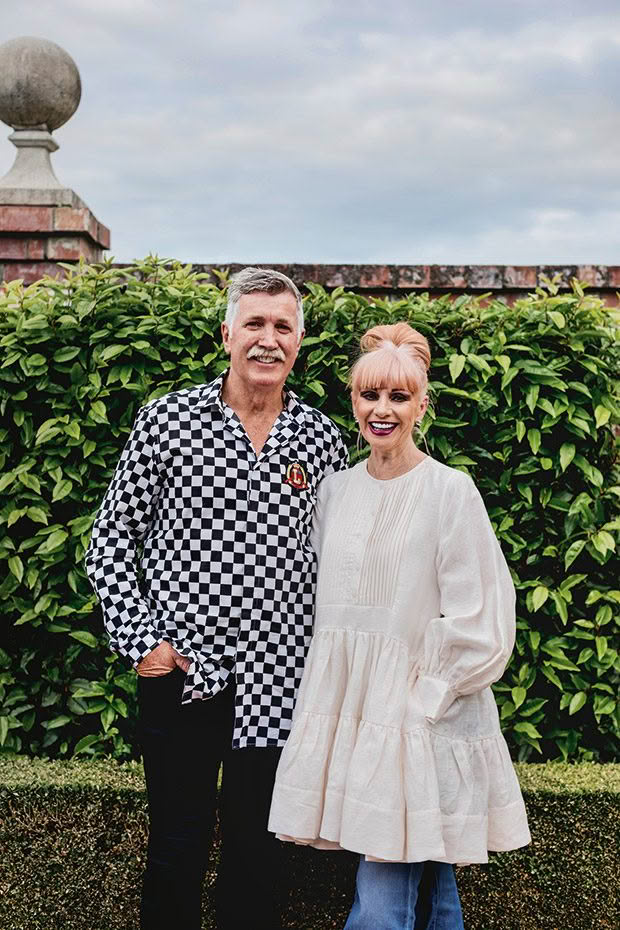
Rob and Lynne do most of the work in the garden themselves. “I enjoy working on it, and I’m also too fussy to ever get a gardener. I could never have a cleaner in the house either,” says Lynne. She comes up with most of the ideas for the garden and is the chief weed puller-outer and rose pruner. Rob is in charge of lawns and the meticulous hedges.
Parties are this social bunny’s natural habitat, but she did not enjoy being kept in a hutch during lockdown. In the first weeks under Level 4, she and her husband Rob turned their eyes from the garden and set them firmly on the hills behind their house. The sun shining through the doughy Wither Hills range backing their Blenheim home and surrounding vineyard offered some reassurance during the uncertainty.
If only the good weather would hold. In the scramble to keep New Zealand safe, the rules around essential businesses were unclear on the first day of lockdown – 25 March. The Hammonds were unsure if their sauvignon blanc grapes — sweetening by the hour on the vines — could be harvested.
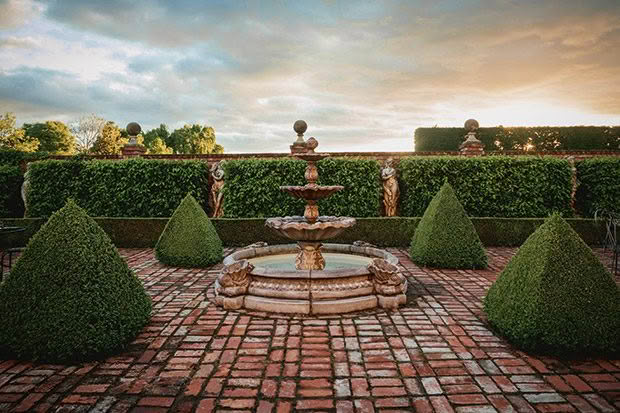
The courtyard area was once home to a kidney-shaped swimming pool, but now showcases a fountain and four stone female representations of the seasons.
“Grape growing is a whole year’s work. The wine industry was nervous because if the government had said we weren’t allowed to harvest, then all that work would have been gone in the blink of an eye,” she says.
Rob’s family has been farming in Fairhall, about five kilometres from Blenheim, since the 1870s, producing sheep and crops such as peas, sweetcorn and wheat. He has ridden the industry’s ups and downs, surviving the wool price crash of the 1980s, which saw wool go from being a third of the family’s annual income to only five per cent. The Hammonds, who now grow grapes for Villa Maria, Sacred Hill, Wither Hills and Whitehaven, planted their first vines in 1999. Rob just sees it as another form of farming.
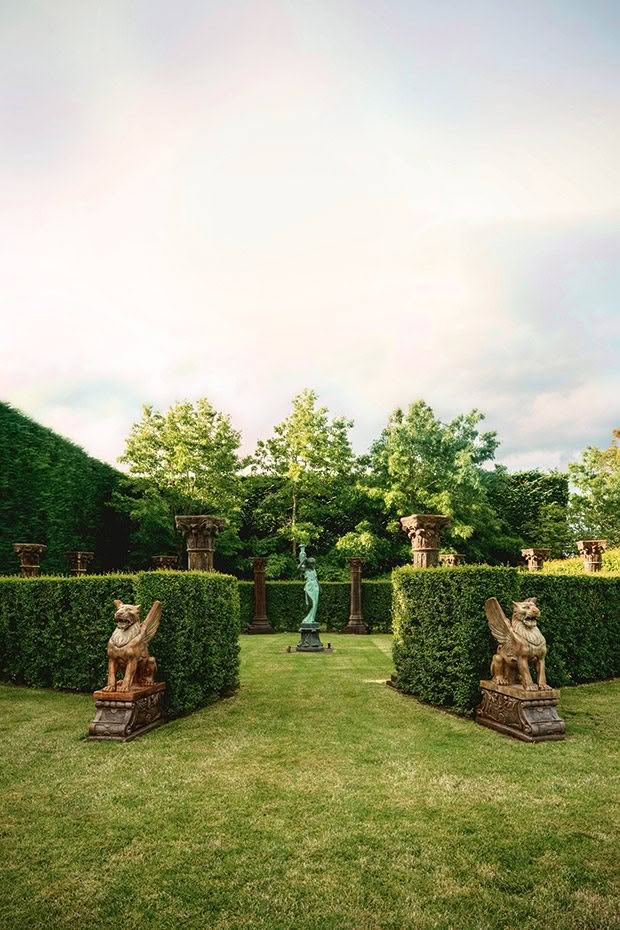
The idea for the circular “room of columns” came from a visit to the ruins of Hadrian’s Villa. Lynne loved the symmetry, simplicity and structure of the Unesco World Heritage site in Tivoli, which was once a rural retreat for Roman emperors. The columns, which Lynne found at Auckland importer, Le Monde, encircle a statue of Minerva (a Trade Me buy). Two winged lions bought from Tuscany Statues in Hamilton stand guard.
“A lot of people think wine growing is a romantic industry, but it’s the same as any crop; the weather governs you. If there’s a storm near the harvest, the year’s work and profit could rot.”
Luckily, Bacchus smiled on Marlborough during Level 4, and the rain clouds stayed away. The industry could work, but physical distancing meant the grape harvest was slow, and equipment had to be cleaned more regularly. At Villa Maria, just up the road from the Hammonds, 85 motorhomes housed winery staff working in shifts while living away from their families.
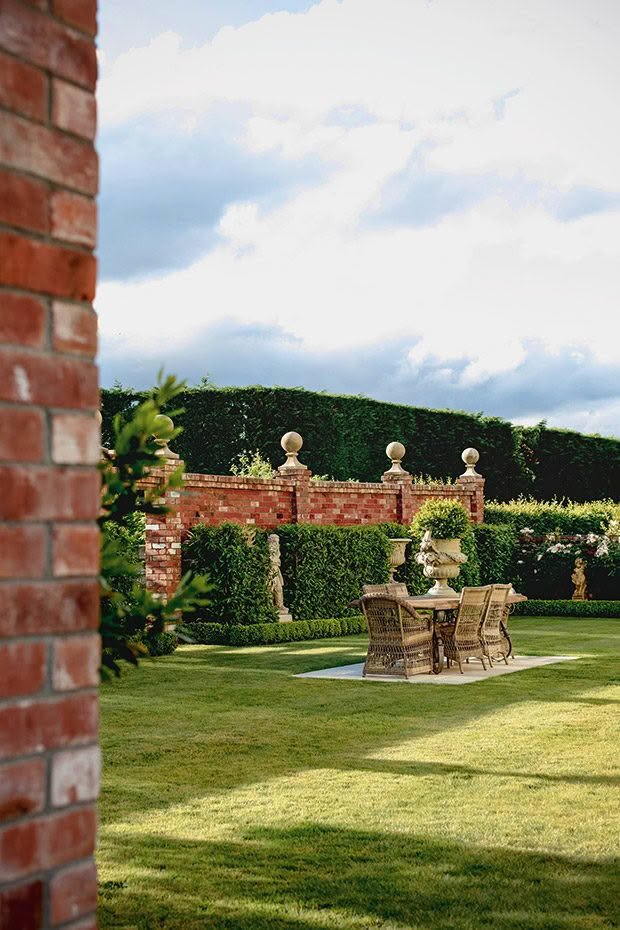
The outside table on the western side of the house is a favourite place for enjoying a glass of wine (Marlborough sauvignon blanc, of course) in the late summer evenings.
“Everything took three times as long because of social distancing. It just goes to show that even under the most difficult circumstances, Kiwis can get things done,” says Rob.
Now that the harvest and lockdown are over, the bunny is ready to hop. Lynne, who is on about half the working bees and committees in Blenheim, is passionate about making sure the area lives up to its Boom Town nickname. New Zealand needs to drink its fair share of sauvignon blanc, she says, because export markets are volatile nowadays.
‘Garden angel’ volunteers transform Te Henui Cemetery into a blooming garden
“Wine is the heart of Blenheim, so we need to support the community. Every glass helps.
“Rob and I have always been conscious of buying local as we’d rather put our money into helping the community than buying something from overseas.”
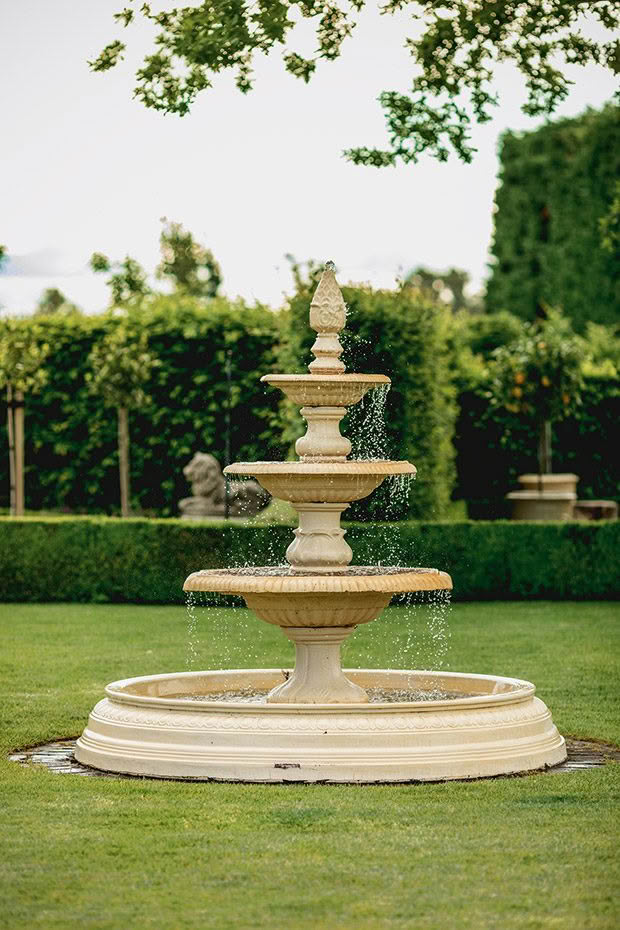
Lynne is a garden-art magpie, finding many of her sculptures, statues and fountains on Trade Me. Statues of mythical creatures such as sphinxes and gods and goddesses are dotted around the garden. Though the gods were often at war in classical mythology, they live happily together at Longfield.
Adds Rob: “A lot of people look at our Italian-inspired garden and think we’ve bought everything offshore but everything was purchased in New Zealand.
“Kiwi companies have imported some of the statues, but the fountains, for instance, were created in New Zealand by craftsmen including Glen Morris at Tuscany Statues in Hamilton and Clive Robertson of local firm Wild South Landscaping,” adds Lynne.
The Longfield garden was completed only three years ago, when the couple added the final garden rooms just in time for their son Josh’s wedding in January 2017.
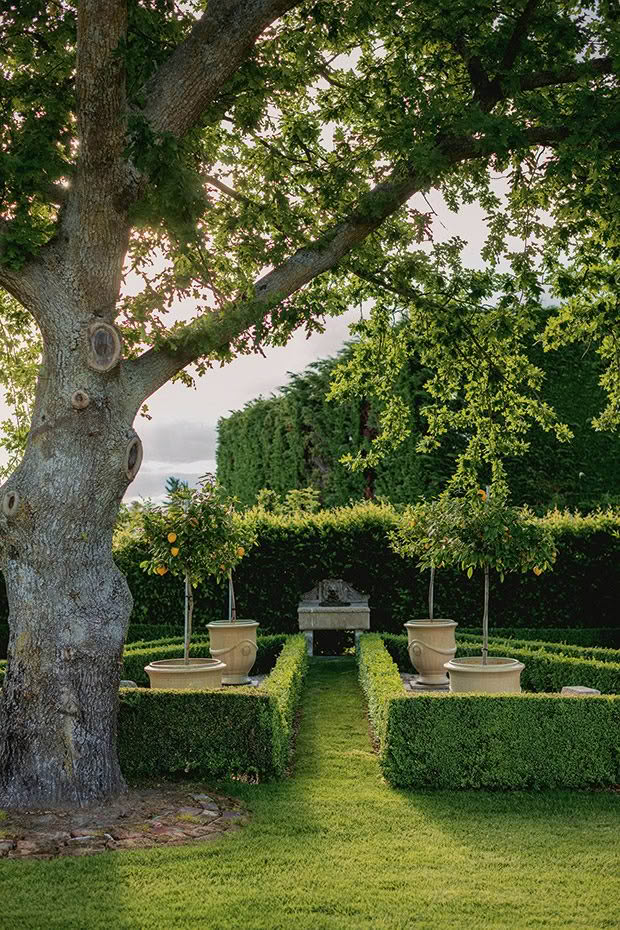
The citrus parterre is planted with potted lemons, and the triangular shapes resemble the segments of the fruit.
“Josh said ‘Mum, we want to have the wedding in the garden, but we don’t want you to go over the top.’ Not go over the top, me? Wrong mother.”
When Lynne and Rob first moved into the Hammond homestead just after their wedding in 1985, there wasn’t a garden on the property, and Lynne wasn’t a gardener. Rob’s parents had always been too busy with the farm to start a big garden, and Lynne, who had previously only lived in cities such as Dunedin, Christchurch and Sydney, wasn’t used to country living either.
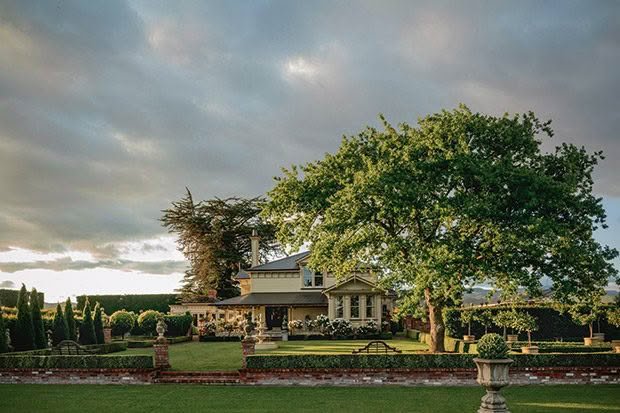
The Longfield homestead was built in 1921 by Rob’s grandfather. The single-storey house was extended in 2002. Lynne asked Rob and their builder to knock down and rebuild the brick wall separating the front garden from the main lawn to make the garden more symmetrical. “Each year I would think we were finished with the garden, and then we’d move or extend something,” says Rob. Many of the garden rooms have been designed around the oak tree, which was planted by Rob’s great-aunt. Rob used to love climbing it as a child.
She met Rob in 1983 while visiting Blenheim for her sister’s birthday. At the time, she was based in Sydney working in an accounting firm in chi-chi Circular Quay. When she returned to Australia, Rob wrote to her regularly and, finally, he encouraged her to return with a one-way plane ticket.
“When I first arrived in Blenheim to live, I was wearing a pink-and-white-striped suit with pink boots. Rob wouldn’t walk with me down the main street of Blenheim because he was embarrassed. People looked at me like I had come from Mars.
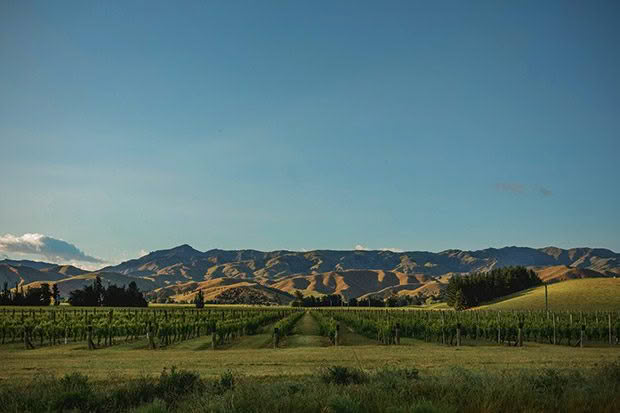
The Hammonds planted 180 hectares of grapes on their land beneath the Wither Hills. Children Josh and EllaRose returned from overseas during the pandemic and have been helping on the vineyard checking the posts.
“For a little while, I worked in a hotel as a breakfast waitress, riding Rob’s sister’s old bike through the frost to work. It was quite a change from Circular Quay, but I grew to love the country.”
The garden stayed on the backburner while she was busy raising their children, Josh, Tyler and EllaRose. She picked up the gardening bug incrementally visiting properties on weekends away with friends. At first, she tried growing a cottage garden full of perennial flowers such as delphiniums, salvias and roses.
- The orangery garden room was built in 2016 and has become a favourite with Lynne’s friends. “People love sitting inside and drinking a glass of wine.”
- The orangery’s chairs and sofas were bought at an auction in Christchurch, and the Egyptian patterned tiles are from Yvonne Sanders Antiques in Auckland.
But during a trip to France for the Rugby World Cup in 2007, she began to fall in love with formal gardens. The All Blacks’ early exit in the quarter-finals (the couple love rugby and Rob’s late father was All Black Ian Hammond) had dashed their hopes. They nursed their wounds by exploring the gardens at the Palace of Versailles.
“You can understand why they had the French Revolution — boy, is it something,” says Rob. A trip to Italy in 2009 provided further inspiration. Lynne and Rob loved the scale and theatricality of the Renaissance-era gardens at Villa d’Este and the ruins of Hadrian’s Villa, both at Tivoli, near Rome.
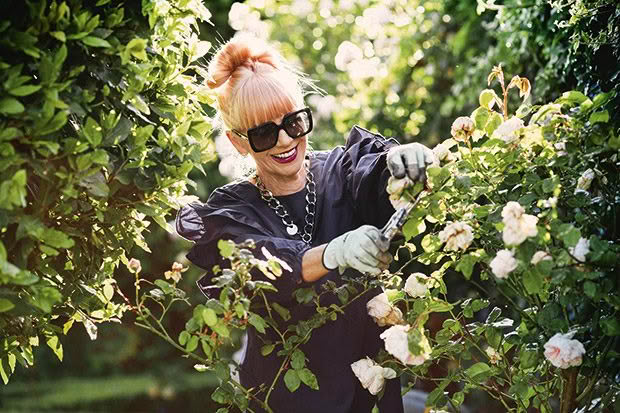
She enjoys clothes and fashion and usually doesn’t change out of her fabulous outfits to garden: “I can’t be bothered.”
“I find formal gardens very soothing and satisfying with the clean lines, structure and the symmetry. I think they are easier to maintain than cottage gardens, which can get shabby at the end of the season.
“As long as you keep on top of the lawn, the bones of a formal garden are always there, even in winter when trees lose their leaves.”

The Souvenir de la Malmaison rose is a prolific climber. Lynne says roses are easy to care for — “just keep on top of the pest control. When I first started gardening, I thought I didn’t like roses, but now I have dozens. I love their variety”
Do not mistake Lynne for someone who doesn’t get her hands dirty. A visitor to her garden once made the mistake of jumping to this conclusion.
“Clearly you don’t do the gardening here with those nails,” she said, pointing at Lynne’s acrylic manicure. Lynne quipped (while holding up her hands), “Yes I do. See, look, I’ve lost two nails while weeding.” She’s never far from her pocket-sized tube of nail glue. Lynne and Rob do most of the work in the garden themselves with some help from their vineyard manager, who is also a passionate gardener.
- The bust of a Roman leader, possibly Augustus, came from an antiques dealer. A feijoa hedge separates him from the olive grove.
- The lion is part of a grand fountain in the driveway, created by Glen Morris at Tuscany Statues in Hamilton.
“Lynne comes up with the garden ideas, and I usually say ‘no’,” says Rob.
Adds Lynne: “But I’m very determined, and I wear him down. So, eventually, it happens.” And then (muttering under her breath), “I think to myself, ‘It looks amazing, but it could have looked amazing five years ago if you’d listened.”
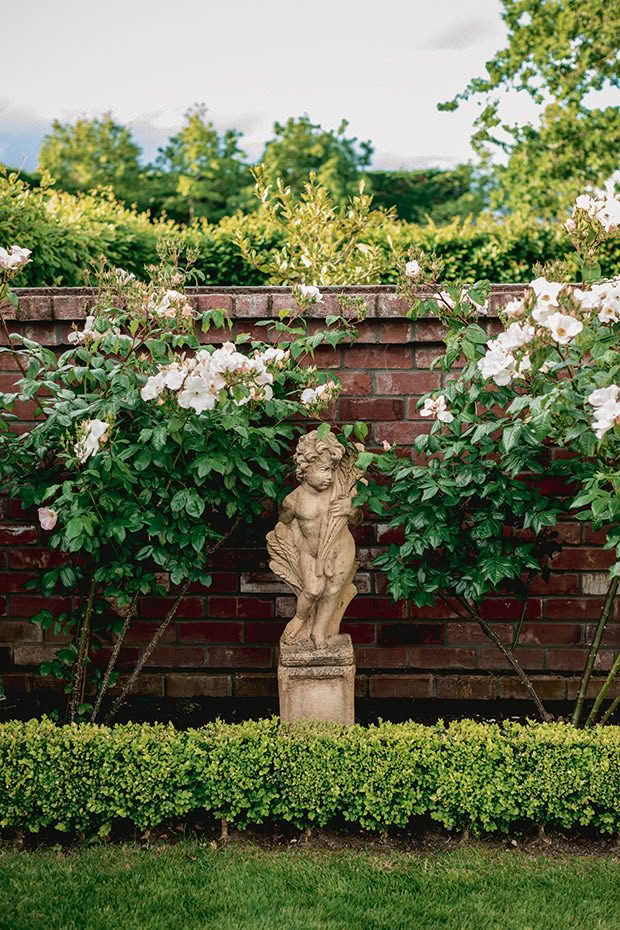
Rob’s mum Nancy loves the roses in the garden and often brings her friends around to enjoy them.
Though the grand vision is Lynne’s, Rob is responsible for trimming the hedges. His wife is guilty of casting a critical glance or two over the straightness of his lines. “I must admit he has a good eye.” Rob might start using a laser to level the hedges in the future after picking up a few tips from landscape designer Paul Bangay while visiting his garden in Melbourne.
“You can slave away on a job all day on the farm, and you can hardly see what you’ve done. But in the garden, it’s easier to see what you’ve achieved,” he says.
Says Lynne: “I also find it very satisfying, and the garden is like a beacon. There’s always someone wanting to visit and take a look around.”
GOING STRAIGHT
Starting a formal garden is all about “setting the bones” and determinig structure. It’s easier than it looks, says Lynne. The couple created the garden in parts over several years, but Lynne thinks planning out the layout of the garden rooms in one go might have been easier in the long run.
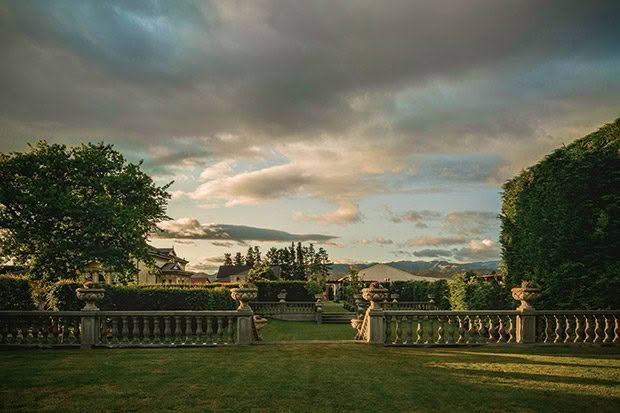
When designing the garden rooms, Lynne and Rob went with the natural lay of the land to create the terraces. Lynne and Rob Hammond have gradually developed their Fairhall property during the past decade, converting parts of the farm to garden.
“Some things don’t line up perfectly, and it bothers me.” A drone photo or a photo taken at height will give an idea of the space available and will make planning easier, she adds. Many of the rooms in Longfield are hedged with hornbeam. The statues are sourced from antique sales, New Zealand statue-makers and Trade Me. (“I’m always clicking ‘Buy Now’ when Rob’s not looking.”)
Rob has rearranged many things in the garden and even had to move an entire wall, which followed a creek bed. Lynne says it was crooked. He says never think a formal garden has to last forever. “Plants are hardy; if you move them, it probably won’t matter. If something annoys you, just get a digger in and shift it.”
SAVE THE DATE
Plans for Rapaura Springs Garden Marlborough are still full steam ahead, and the festival will run from 5 to 8 November. The event will be similar to previous years, but should government travel restrictions or limitations to group gatherings still apply, it will be modified appropriately. Tickets go on sale in August at gardenmarlborough.co.nz
MORE HERE
Love this story? Subscribe now!
 This article first appeared in NZ Life & Leisure Magazine.
This article first appeared in NZ Life & Leisure Magazine.
